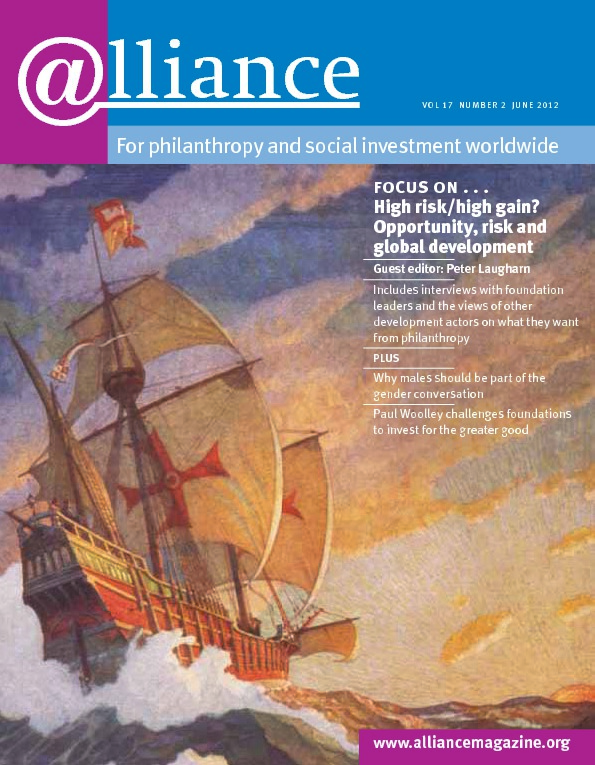Lance Fors’ background is in the commercial and venture capital world. He founded a biotechnology company, Third Wave Technologies, and eventually sold it. Since then he has focused on social change and entrepreneurship, acting as mentor to a number of social entrepreneurs. Alliance asked him, as someone who had had a foot in both camps, how the concept of risk differs in the for-profit and non-profit sectors. For him, it’s when he puts on his non-profit hat that he’s willing to accept a higher failure rate to try to create systemic solutions.
First, risk is an essential component of any investment, whether in the commercial or the social sector. Obviously, you look at ways of minimizing it in any given situation. I’m a classic early-stage VC investor whether it’s for-profit or non-profit. I like to get in early, I like to find great people, and I like to help them build that organization.
When I’m thinking of the downside risk, the possibility of failure, I look at two things. First, the dollars, whether in the form of equity investment or a Series A fund or a grant, and, second, my non-financial contribution: am I going to sit on the board, how much time will I devote to it, how much of a leadership role am I going to play? Those are the two assets I balance.
Also, of course, there’s the upside risk, the risk of missing opportunities. Again, I look at this in terms of my own position. I’m going to allocate my assets, which are my human and financial capital. I know what deal flow I have now and given that, over the next three years, how many large, small and medium bets can I afford to place?
With venture capital, the fear of loss can override the desire for gain. As soon as you enter the non-profit sector, all capital is really risk capital. Paradoxically, however, non-profit funders are often more risk-averse than their for-profit counterparts. From a VC perspective, if one third of your investments do well, then you’ve done very well. If you’re an early-stage investor, if only a third of your investments are still-born or fail, you’ve done very well. In the non-profit sector, that’s a ratio that few funders would be prepared to contemplate.
I believe you have to balance the fear of loss against the desire for gain. As a non-profit funder or investor, you should have an allocation that is high risk – a grant of course is total risk, because you’re giving the money away and getting no financial return. Depending on your personality, your portfolio should have some percentage of what I would call the very high risk category, which also means potentially very high return. When I put on a non-profit hat, I’m looking for systemic solutions and I’m willing to have a higher failure rate to try to create them.
I think there’s a parallel between how individuals or foundations that have assets to allocate across many organizations might approach that allocation and the way a corporation would think about it. If you were Apple, for instance, you would have a certain amount of capital dedicated to near and mid-term things, which is really refining existing product lines, and then you’d have smaller amounts allocated to research for things you can’t even dream of today. That is the high-risk capital. If you’re a foundation, you need certain allocations in your focus areas to things that address immediate problems, but I don’t think there’s yet enough appreciation of the need to focus on longer-term issues and to think about asset allocation as an engine for creativity. A funder who funds education, for example, might fund programmes to make better teachers or school improvement programmes and so on in a certain country or region, but they could also fund research into generic solutions to personalize learning in the classroom, which could be applied everywhere.
For me, two things are missing in the social sector. One is the focus on the solution and the language of positive action. The second is really the playing of the long game. We have a kind of attention deficit disorder: we jump around from one new thing to another. I believe you need a much longer-term focus and one that stresses solutions, not problems. There’s a strong tendency to try to get results too quickly. Systemic change takes time, and it takes the willingness to have at least a five-year, or more likely a ten-year, perspective. If we could do one thing to increase the impact that we’re having in the non-profit and even the social enterprise sector, it would be to pledge longer, fewer and deeper bets.
Lance Fors is Chairman of Silicon Valley Social Venture Fund, Social Venture Partners International, New Teacher Center and Reading Partners. Email lfors@sbcglobal.net





Comments (0)